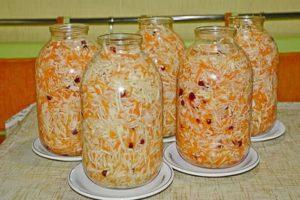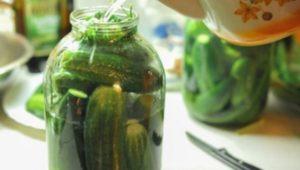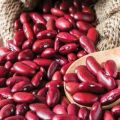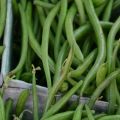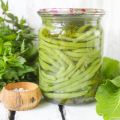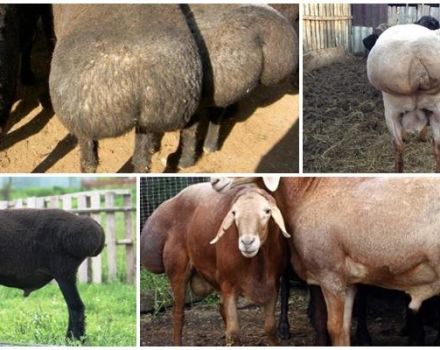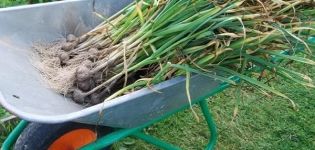Methods of harvesting and eating beans for the winter, TOP 10 recipes and contraindications
Bean blanks for the winter are extremely nutritious and healthy during the season when the body is lacking in vitamins. In addition, many people value legumes for their taste and the variety of dishes they go with.
Content
The benefits of legumes
Legumes contain many useful substances for humans: vitamins C and PP, iron, magnesium, phosphorus, potassium and calcium. They stimulate the digestive processes due to the large amount of fiber in the composition, improve the intestinal microflora. Plant protein from these cultures is involved in the construction of new cells, although not as actively as animal protein.
Beans stabilize cholesterol and blood sugar levels, hormones. Eating them strengthens blood vessels and heart, improves memory. They are also recommended for diabetics, since the carbohydrates from the beans are absorbed without the release of insulin.
The stable presence of legumes in the diet has a positive effect on the immune and nervous systems. However, eating beans daily and using them as main dishes is not recommended: they are rather heavy food.
Who is undesirable to eat
While legumes are certainly good for the body, they must be cooked properly. Otherwise, they release toxic substances that are dangerous to humans.
For certain groups of people, there are contraindications to the inclusion of beans in the diet. These are patients with hepatitis and pancreatitis, gout and gastrointestinal disorders. Legumes can also be a heavy food for the elderly and people with pancreatic disease.
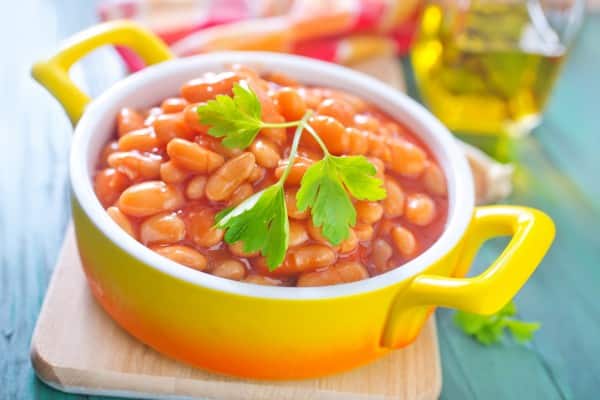
The oligosaccharides contained in these crops are difficult to digest, and therefore lead to increased gas production even in healthy people. Various carminatives, which are often included in the recipes for making beans, soften the effect of flatulence.
Delicious recipes for the winter
Many housewives believe that home conditions are extremely favorable for creating all kinds of blanks: all the devices are at hand, and the opportunity for creativity in the form of an experiment with ingredients opens up.
You can cook each of the recipes below to find the one that works best.
Beans in tomato sauce
Self-made tomato sauce will decorate the look of the dish and add additional useful properties. Especially if you use your own grown vegetables.
Ingredients for preservation:
- 1 kilogram of beans of any kind;
- 500 grams of onions;
- 1 small carrot;
- half a glass of sunflower oil;
- 5 kilograms of tomatoes;
- salt, sugar, spices at least 1 teaspoon each.
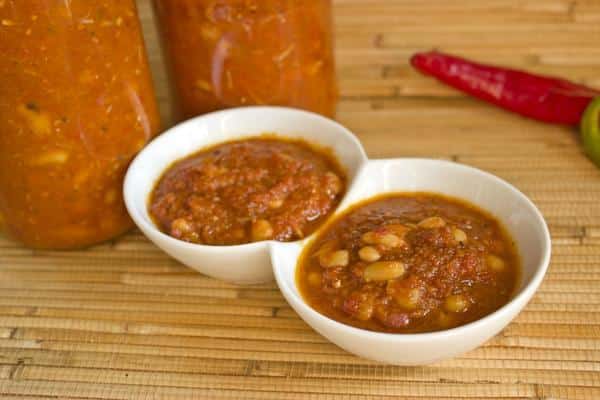
- Soak the beans for 5 hours, then cook. Under no circumstances can they be digested.
- Prepare roast onion and carrot. Fry until golden brown.
- It is necessary to ensure that no peel remains on each tomato. To do this, cut the tomatoes into small pieces or grind them with a blender.
- Transfer the frying to a saucepan, pour in the oil and add the tomatoes. Stir and heat for 20 minutes.
- Dip the beans into the resulting mass, add salt and sugar. Bring to a boil and transfer to pasteurized containers.
- Cool the workpiece slowly under a woolen blanket. This will cool it evenly.
In tomato paste
This recipe saves time, since the sauce does not need to be cooked, but you can take regular tomato paste from the supermarket.
Prepare:
- 1 kilogram of beans;
- 1 small package of tomato paste;
- 300 grams of carrots;
- 3 small onions;
- 4 tablespoons of vegetable oil;
- 2 tablespoons of salt and sugar;
- 5 liters of spring or boiled water;
- 5 teaspoons of ground pepper.
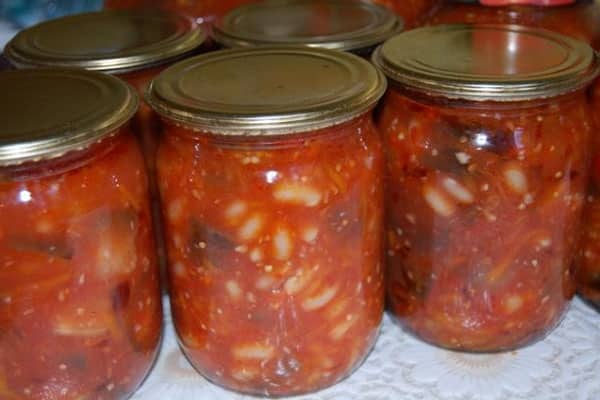
- Cook the washed beans together with sugar and salt.
- Prepare the carrot and onion roast, then pour in the water from the beans and the contents of the jar with tomato paste. After boiling, heat for another 15 minutes.
- Add beans and oil. Boil, heat for another 15 minutes. Add spices, if desired.
- Close the lids and place the overturned jars in the cellar.
Canned white beans
The beans in this appetizer retain all the important nutrients.
Required:
- 1 kilogram of white beans;
- 3 teaspoons of salt;
- 2 teaspoons of granulated sugar;
- 1 small pod of bitter pepper;
- 10 pieces of allspice;
- 3 kilograms of tomatoes;
- 2 pieces of bay leaves.
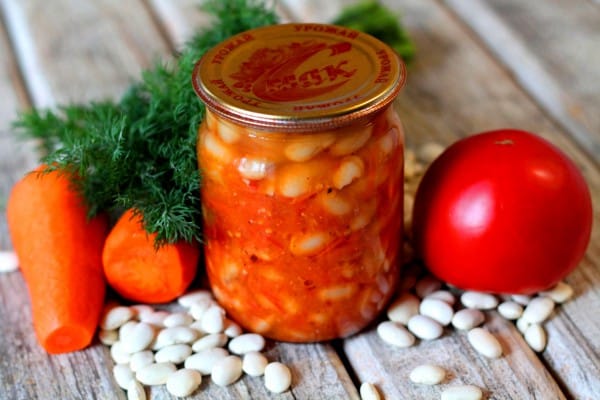
- The soaked beans should be cooked, but not overcooked. Cook on low heat with 3 teaspoons of salt and 2 teaspoons of sugar. When done, transfer the beans to a colander.
- Blanch the tomatoes and grind them with a meat grinder or blender.
- Put white beans and tomato puree in a large bowl. Add spices, 1 teaspoon of salt. Heat for 30 minutes, a few minutes before the start of the boil, throw the lavrushka into the pan.
- The appetizer is ready. Now it needs to be laid out in containers and left until winter.
Red
A simple recipe for making canned red beans in your own juice.
Ingredients:
- 1 kilogram of red beans;
- 3 tablespoons 9% vinegar
- 500 grams of onions;
- half a glass of sunflower oil;
- 500 grams of carrots;
- 3 teaspoons of coarse salt;
- 2 teaspoons of granulated sugar;
- the rest of the spices are optional.
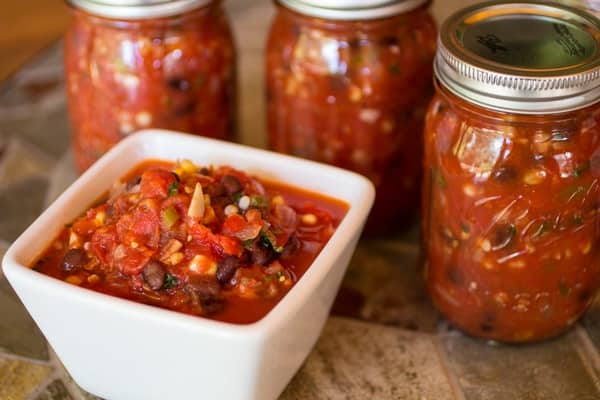
- Soak the beans for 12 hours. Change the water several times during this procedure. Cook them with salt and sugar.
- Fry onion rings with carrot slices in a pan for 10 minutes. Add very little oil.
- Pour the remaining oil and add the beans. Heat for another 10 minutes after reaching a boil. Add spices 2 minutes before the end of cooking, if desired.
- Arrange the food in jars and carefully roll up. Done!
Snack with vegetables
Pickled beans with vegetables is one of the most delicious snacks on the everyday dinner table or at holiday get-togethers.
The following components should be prepared:
- 5 kilograms of boiled beans of any kind;
- 500 grams of fresh bell pepper;
- 50 grams of fresh eggplant;
- 1 kilogram of tomatoes;
- 1 glass of sunflower oil;
- 3 tablespoons of salt;
- 1 tablespoon sugar
- 1 tablespoon of 9 percent vinegar
- thyme, paprika, garlic to taste.

- Cook legumes according to the usual scheme with soaking.
- Chop the tomatoes without peel and transfer to a saucepan, where add salt, sugar and butter. Heat for 20 minutes.
- Add the cooked beans and then the eggplant cubes. This is followed by another 15 minutes of cooking on medium heat.
- Chop the bell pepper into strips and put in the mixture with vinegar. Boil. At the end, add spices as desired.
- Spicy preservation is ready! It remains to arrange it in pasteurized jars and wrap the lids tightly.
Pickled beans
For this type of preservation, you can use asparagus beans, since this is practically the only way to preserve the nutrients of this culture.
Marinating asparagus beans is very easy because no additional sterilization is required.
After blanching, the pods are poured with boiling marinade.

Purchase in the store:
- 1 kilogram of asparagus beans;
- 2 tablespoons of salt;
- 3 teaspoons 9% vinegar
- 2 tablespoons of granulated sugar;
- 1 liter of spring water;
- 4 pieces of black pepper.
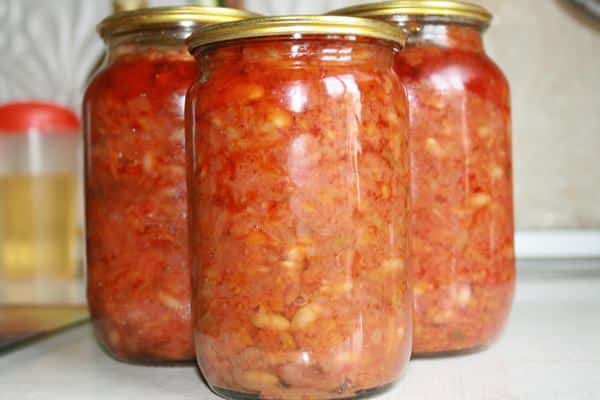
The calculation of the components is given for a capacity, volume per liter.
- Wash the leguminous pods and remove the stalks with tails. Dip in boiling water and then rinse with cold water.
- Next, you need to decide in what form the beans will be marinated. You can leave it intact, or you can cut it in half, then a little more will fit in the jar. Chopped legumes are easy to add to salads.
- Place beans in sterile glassware to the very edges.
- It's time for the brine. Fill the saucepan with a liter of boiled or spring water, add sugar and salt, add 3 tablespoons of vinegar and black pepper.
- Boil the brine for 3 minutes. Pour it into a bowl with beans and close. Wrap in cloth and wait for cooling. It is recommended to turn the container upside down for efficiency.
Lecho recipe with beans
Cooking lecho will take longer than conventional canning, but it is an independent dish that completely replaces meat products during the fasting period.
To create a delicious lecho with beans you will need:
- 5 kilograms of tomatoes;
- 1 kilogram of carrots;
- 1 kilogram of fresh Bulgarian pepper;
- 1 kilogram of any kind of beans;
- 1 pod of hot pepper;
- 3 garlic cloves;
- 1 glass of sunflower oil;
- 1 kilogram of onions;
- 1 tablespoon of coarse salt
- 1 teaspoon sugar
- 2 hours of clean time and a desire to make the best lecho.
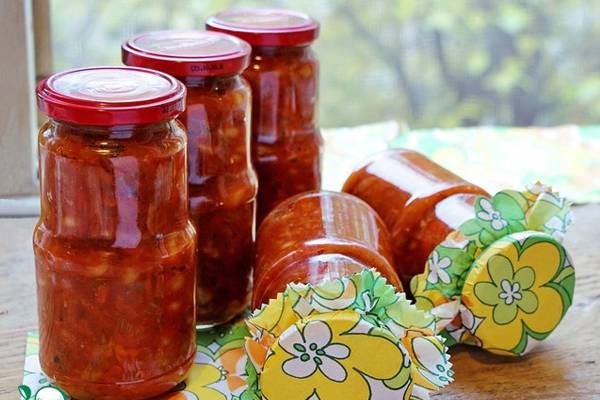
- Soak the beans overnight. Boil it a little, not reaching readiness.
- Peel the tomatoes. You can cut the lower parts of the fruit and then blanch: the skin will be easier to remove. Shape the vegetables into cubes.
- Put legumes and tomatoes in a bowl or cauldron. Simmer for 20 minutes.

- Wash and peel the onions and carrots, chop them finely. Get rid of the peel of the onion and garlic. Core the peppers. Chop all vegetables.
- Pour oil into another dish, add sugar, salt. Stir and put all the cooked vegetables in there, except for the hot pepper and garlic. Simmer until vegetables are done.
- After 20 minutes, add a mixture of tomatoes, beans and vinegar to the resulting mass. Stir in and add hot pepper with garlic cloves. Boil.
- Pour into jars with iron lids.
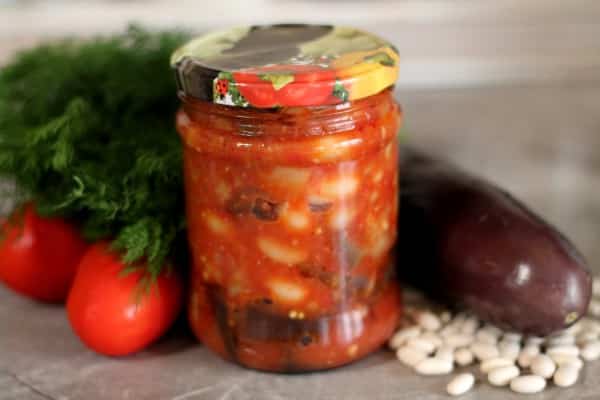
Bean caviar
Served with crispy crackers or on sandwiches with herbs.
To create bean caviar you will need:
- 1 kilogram of beans;
- 1 jar tomato paste;
- 1 kilogram of tomatoes;
- 500 grams of carrots;
- 1 kilogram of onions;
- salt, pepper, 2 teaspoons;
- 1 pack of vegetable oil;
- 4 leaves of lavrushka.
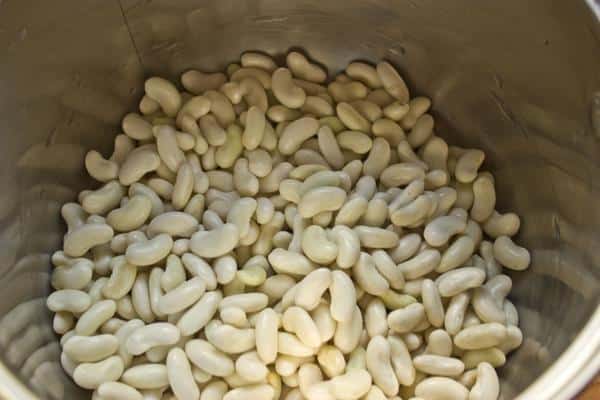
Thyme and paprika are also added to the recipe.
- Rinse the beans, put in a saucepan, cover completely with water. Boil.
- When boiling, add salt, add onion. Heat until beans are cooked.
- Turn off the heat, drain the liquid and rinse the beans in a colander with cool water. The bulb can be thrown away: it will not be useful later.
- Grind the beans with a blender.
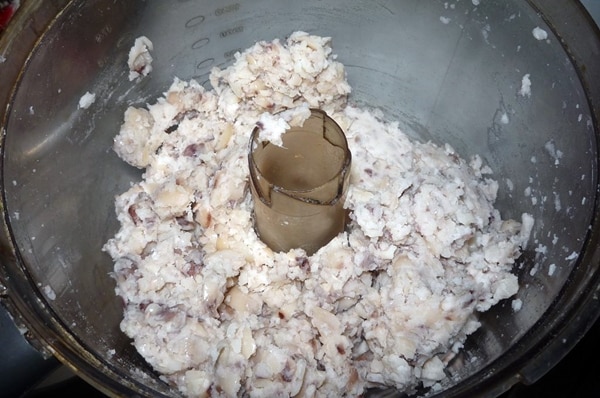
- Pour half a glass of sunflower oil into a cauldron, add onion cubes and grated carrots. Fry until the onions are translucent.
- Chop or grate the tomatoes finely. The main thing is to get rid of the peel.
- Add the beans, tomatoes and tomato paste to the roasted cauldron. Add salt and pepper. Stir and cook at 1/3 of the maximum power until the caviar reaches a thick texture.
- Transfer the caviar to small jars. Lay a towel on the bottom of a large saucepan, put jars on top. Add water so that it covers the jars by ¾ and boil. After boiling, heat for another 15 minutes.
- The cooled caviar can be stored.
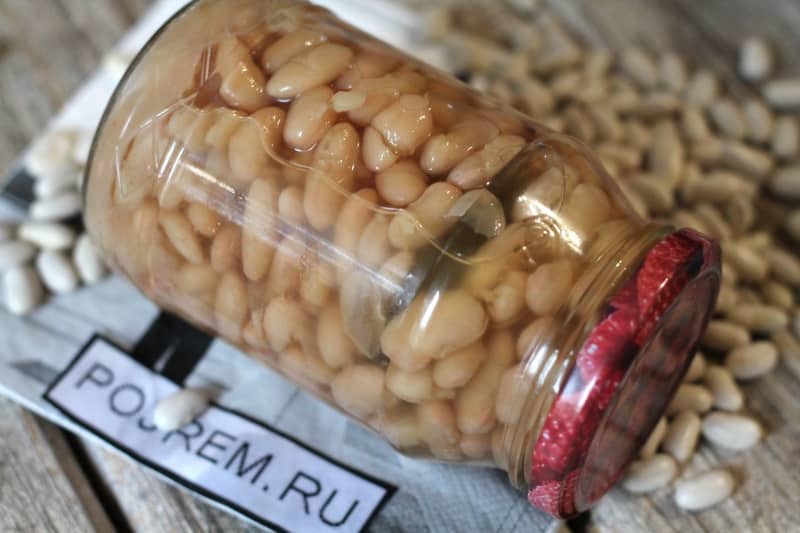
Canned green beans
To preserve green beans, very few components are needed:
- green beans - 1 kilogram;
- spring water - 1 liter;
- coarse salt - 2 tablespoons.
- Trim the ends off clean beans and cook until the pods are soft.
- When the legumes have cooled down, place them in a preservation container.
- Pour the water left over from boiling the pods into the jars and roll up the lids.
- Make a water bath and heat for 1 hour at boiling point.
- Remove the containers, put in the refrigerator. Serve with salt.

How to store legumes properly
Do not forget about the special storage conditions for the workpieces: always in cool, dark places, and immediately put open jars in the refrigerator.
